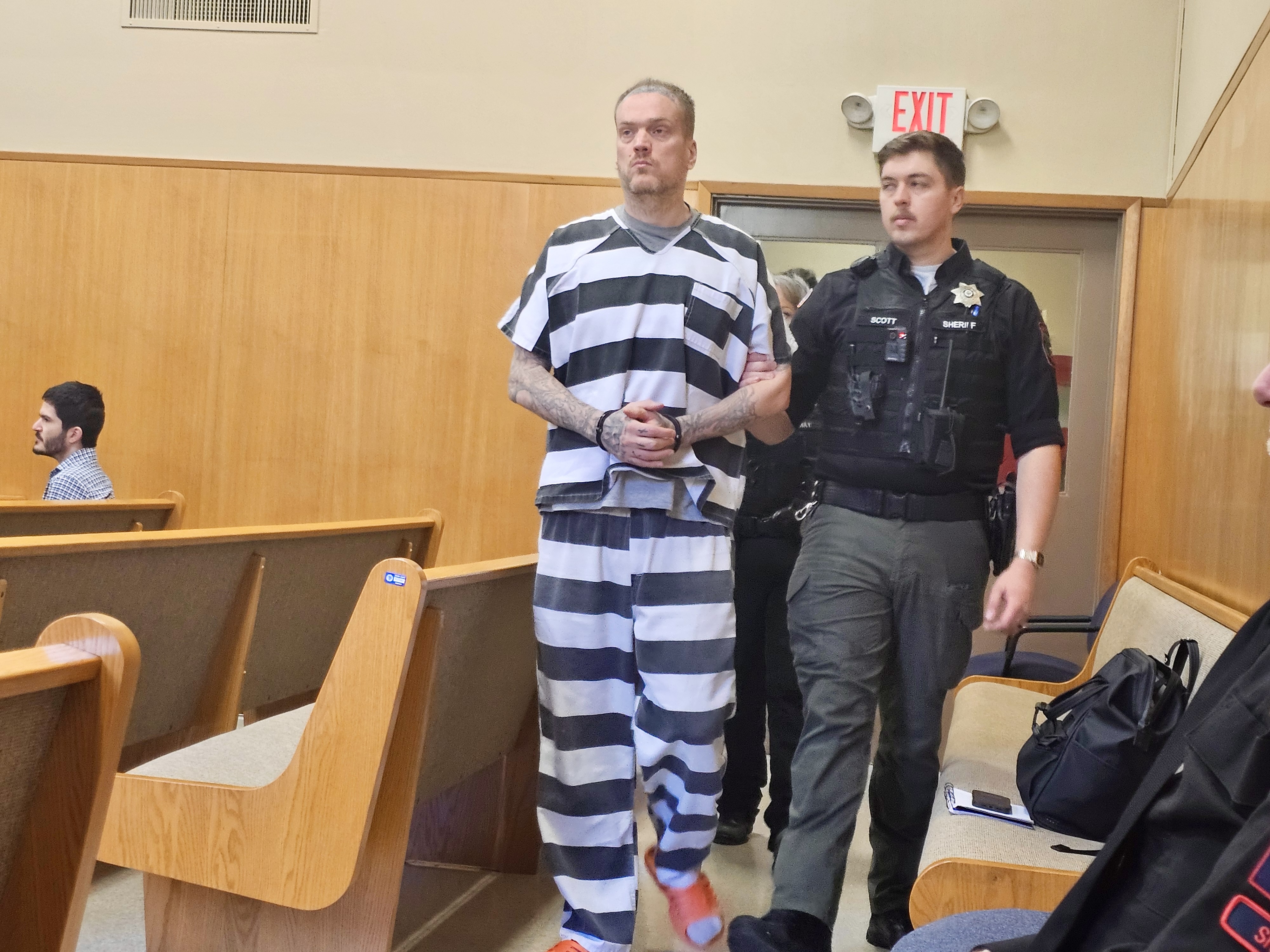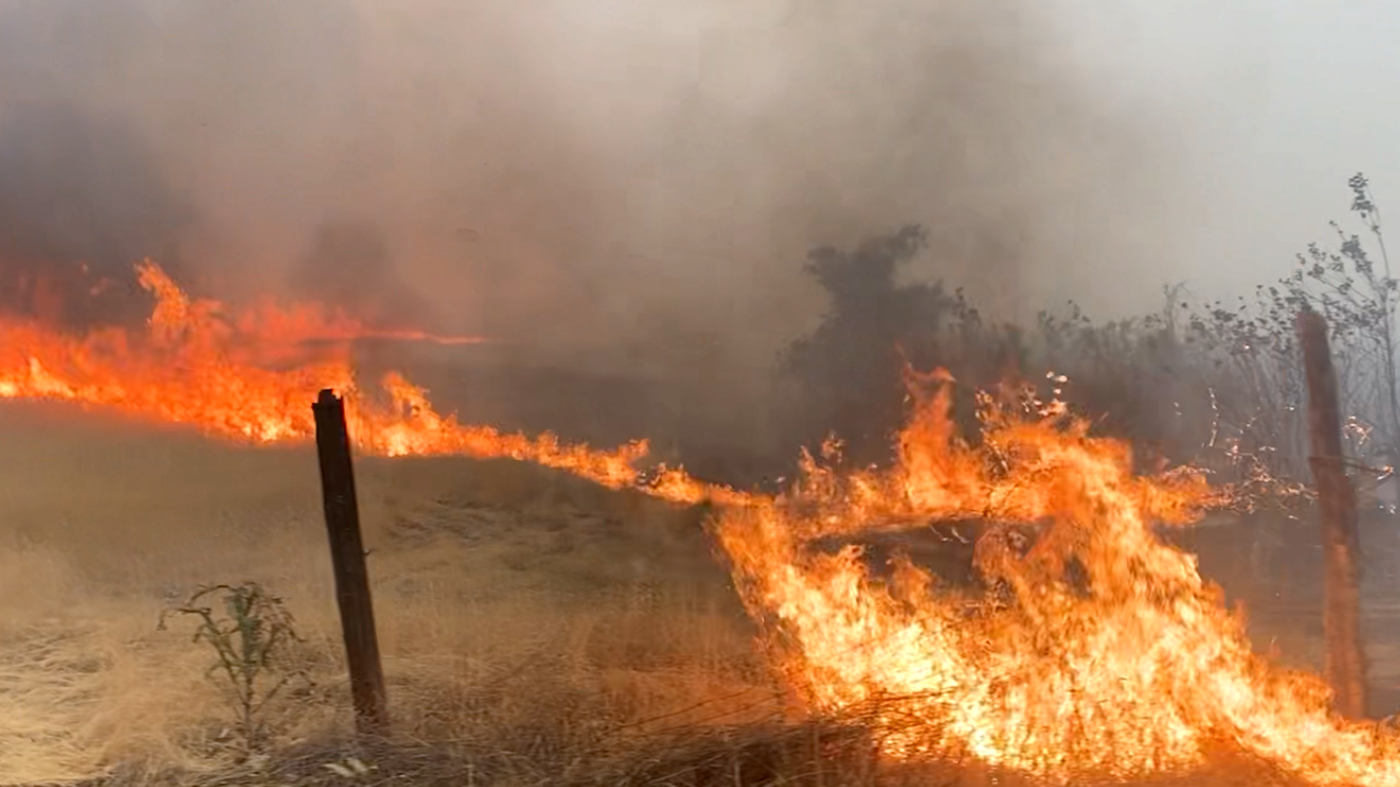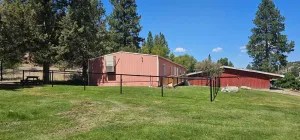Where there’s smoke, there’s fire: John Day’s firefighting history
Published 4:00 pm Sunday, January 26, 2003

- A sparsely populated John Day in 1888 features the Methodist Church in the foreground and the McCallum and Bayley Cash Store (marked with an X, center-right), which later would become part of the John Day Motor Co. building, owned and operated by Lloyd Ogilvie. Photo contributed by Evelyn Ogilvie
During the early years of John Day, the city marshal was the fire chief. Schyler Watson was thought to have been appointed the first actual fire chief, thus easing the load of the marshal a bit.
Trending
The Benson Hotel caught fire in December 1924 and was totally destroyed. Later it was rebuilt to include a dining room.
On Feb. 10, 1930, City Ordinance No. 135 was enacted and established a fire zone regulating building construction. Among other things it prohibited building with wood in the downtown area.
In 1930, there was a hand-pulled hose cart and a fire bell. During one incident, Wynn Keizur heard the fire bell and ran across the street from his blacksmith shop to the fire hall to help pull the hose cart. As the crew was turning to head north, the elderly Keizur fell down and one wheel of the cart ran over him. The crew and cart didn’t even slow down on their way to the fire. Keizur lay there for a short time, then slowly got up and limped back to his shop, talking to himself. History doesn’t record if he answered any more fire bells.
Trending
By 1931 it was evident that the city needed better equipment. The John Day Commercial Club and the Lions Club provided the first fire truck. This was a small locally built unit that contained a small chemical tank and a hose bed. The old hose cart was sold to Dayville for $40. It is possible that J. Earl Williams helped build the first truck. He was appointed fire chief on Jan. 12, 1932, by then-mayor Dan Gleason. On May 9, 1933, the city recorder contacted the Oregon Insurance Rating Bureau for suggestions on correcting equipment and other fire protection deficiencies, with an eye to obtaining a better insurance rate for the town. On June 1, 1937, the city council ordered a GMC Fire Pumper, with the cost not to exceed $3,583.00.
The war took its toll on volunteer fire fighters. In May 1942, Stan Phillips joined the volunteer fire department. Stan, 17, was still in high school, and volunteered primarily to get out of school when the alarm sounded. However, after a fatal fire he soon realized that there was a lot more to the fire service than getting out of school. Stan went on to make the fire service his life’s work. He served in the Navy for two years. With his brief experience in John Day, he was assigned to the fire brigade on his ship.
Lloyd Ogilvie served as Fire Chief from 1935-45, due to the growth in his own Ford dealership. However, he continued to allow volunteers from his shop to respond to fires. His successor, Wayne (Peck) Badley, served until Dec. 31, 1951. Dan Gleason, who was the only paid city employee and thus wore many hats, assisted Ogilvie and Badley a great deal.
Stan Phillips returned from service in the U.S. Navy and in June, 1946, rejoined the John Day Fire Department. After attending a State Certified Fireman Teacher Training Course he was appointed Training Officer, a job he loved. On Jan. 1, 1952, he became Fire Chief. He set about reorganizing with an eye to an efficient, well-trained department. He appointed assistant chiefs Bill Shanley, Bill Smith, John Waterman, and Bob Willey. In addition, fire department captains were elected and assumed some responsibility of training as well as firefighting. Social officers were elected who put together a constitution and by-laws to guide the business of the organization. They set up a mutual aid response plan for neighboring fire departments.
They soon got their practice. On June 8, 1952, fire swept through a portion of the John Day business section on the west side of Main Street. Destroyed were buildings housing Sprouse-Reitz Co., Chester’s Market, and Farley’s Men’s Wear. There was extensive damage to the PN Shoun building, which housed the Bruce Eddy Pontiac Co., Benson’s Shoe Store, and the Benson Hotel. Fortunately, the new mutual aid plan was in place, and was implemented, allowing neighboring fire departments to respond.
In February 1953, a new fire engine was ordered, and a new fire station was built at the junction of Dayton Street and Highway 395. A new alarm system was installed, with two new sirens. The new engine was delivered in August and the fire department re-organized into two companies.
Tragedy struck on Feb. 25, 1954, when the 17-month-old child of George Masonheimer died in the family home, which was located in the proposed Rural Fire Protection District. In the next several years there were more fires – Knox Store burned on Feb. 10, 1957 and the Methodist Church on May 2, 1957. The Knox Store, though severely damaged, was saved, but the church was destroyed.
The city earned a better fire classification in July 1957 through improvements in the water system and in the fire department, but it wasn’t until 1959 that the formation of the John Day Rural Fire Protection District was approved. The city fire department continued to respond to rural fires until a budget could be set up, in 1960.
On April 4, 1960, Stan Phillips was appointed Area Deputy Fire Marshal for six Eastern Oregon counties. He maintained his headquarters in John Day, and continued as Fire Chief with the blessing of the Oregon State Fire Marshall.
A new 1,000 gpm fire engine was delivered in 1962, which was to be used within the city limits with the smaller engine responding to rural fires.
A disastrous blaze on the north side of Main Street in John Day in February 1964 burned out the Orpheum Theater, John Day Hardware, Minette’s Beauty Salon, and Dixon and Campbell’s Barber Shop, while other businesses suffered smoke and water damage. In 1966, fire broke out in the log decks at San Juan Lumber Co. This spread to and destroyed the Jack Guilliams’ dwelling before it was contained.
Stan Phillips retired as fire chief on Dec. 31, 1967. Bill Shanley was appointed to fill the position.
On Dec. 29, 1969, fire broke out on the north side of Main Street in John Day, one block away from the 1964 fire. Several businesses, including Miller’s Furniture, and the apartments on the second floor of the complex, were badly damaged. The historic church, just feet away from one of the blazing buildings, was enveloped in smoke and flames, but suffered only a few scorched shingles and minor smoke damage.
Fire chiefs in succeeding years included Bob Willey, Tom Sutton, Sandra Sutton, Glenn Palmer, Stephen Keegan and Steve Allen.
The attitude of the community toward a volunteer fire department is perhaps evidenced by an incident while Bill Smith was fire truck operator and pump operator. Bill said one day while waiting on a customer in the store the fire alarm sounded. The lady said, “You’re not going to leave me right now, are you?” Bill said, “It may be your house.” The lady said, “Get going!”
Stan Phillips went on, with his wife Loyce, to conduct fatal fire investigation throughout the Pacific Northwest, including Alaska. Stan died on May 9, 2002, and as a special tribute his casket was carried to the cemetery on a fire truck.









